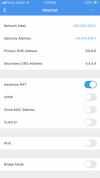radiogram
Member
- Thread Starter
- #41
Kal - Thanks for your response, I follow your Stereophile reviews, My Point was about people who have a streamer with DLNA/UPNP capability but yet want to use USB because they are misinformed that steaming UPNP compromises SQ. They are nor not educated to know that streaming music file from their PC with UPNP is no different than transferring your Word Doc or Excel file between PCs on your home local LAN. The protocols used are same.Because it is a direct connection and does not depend on the existence/status/bandwidth of a network. My setup supports both and I can easily switch from one to the other with one of my DACs but the others simply plug-in via USB. No need for an intermediary "streamer."
NAS file storage is another story because NAS' are typically very noisy.
If you just have a DAC your point is valid. But if you have a streamer+DAC like Bluesound Node or Yamaha WXC-50 there is no need to use USB if you have access to Ethernet o Wifi. Today's Wifi Router are pretty fast.
Last edited:

